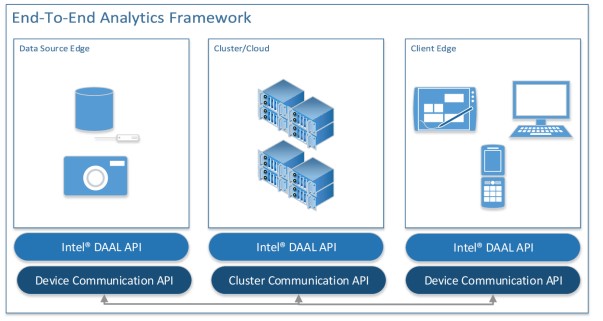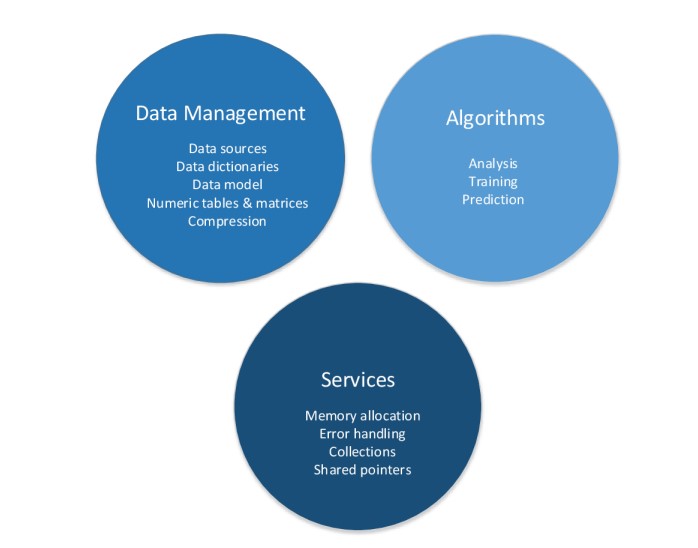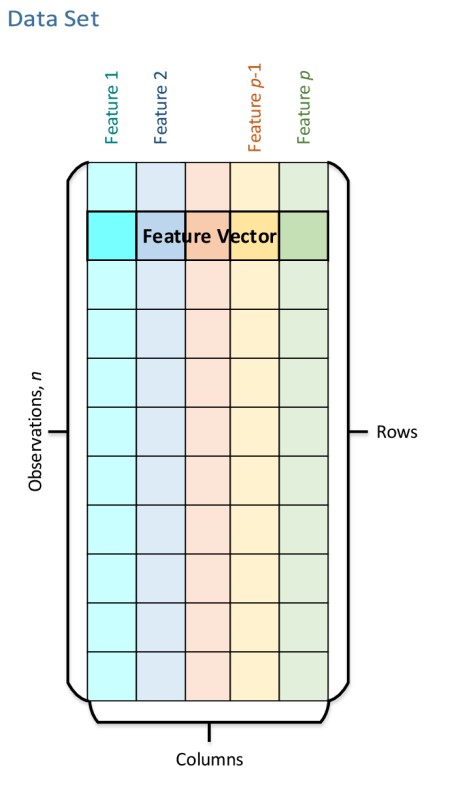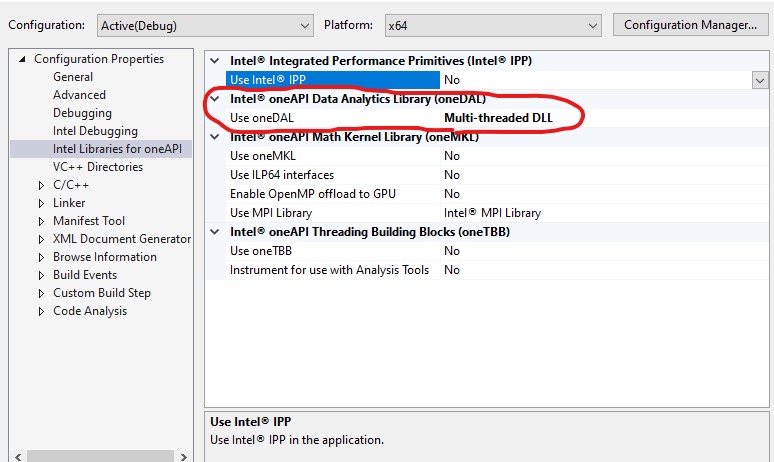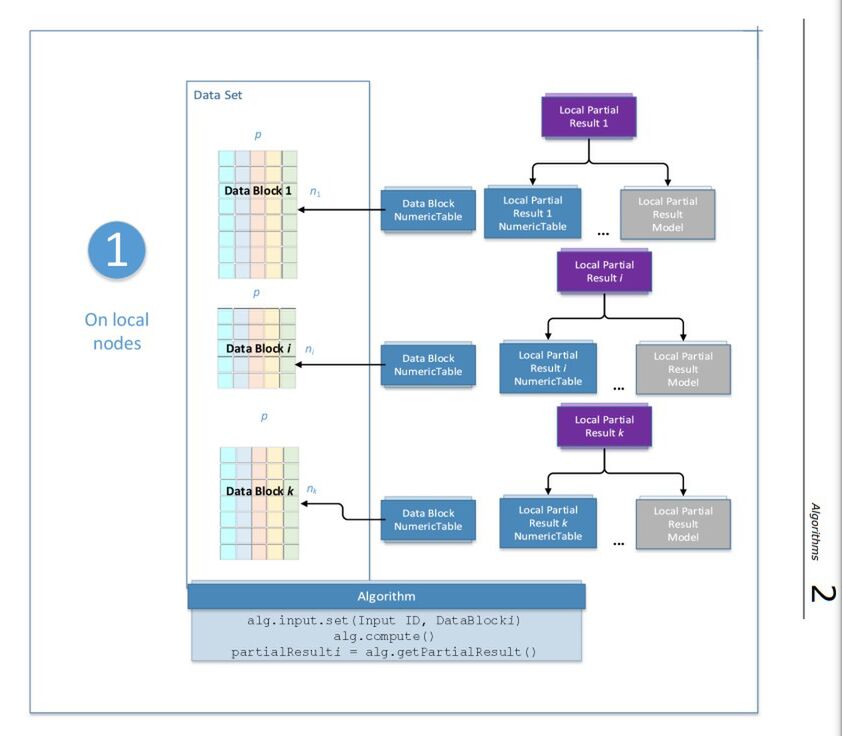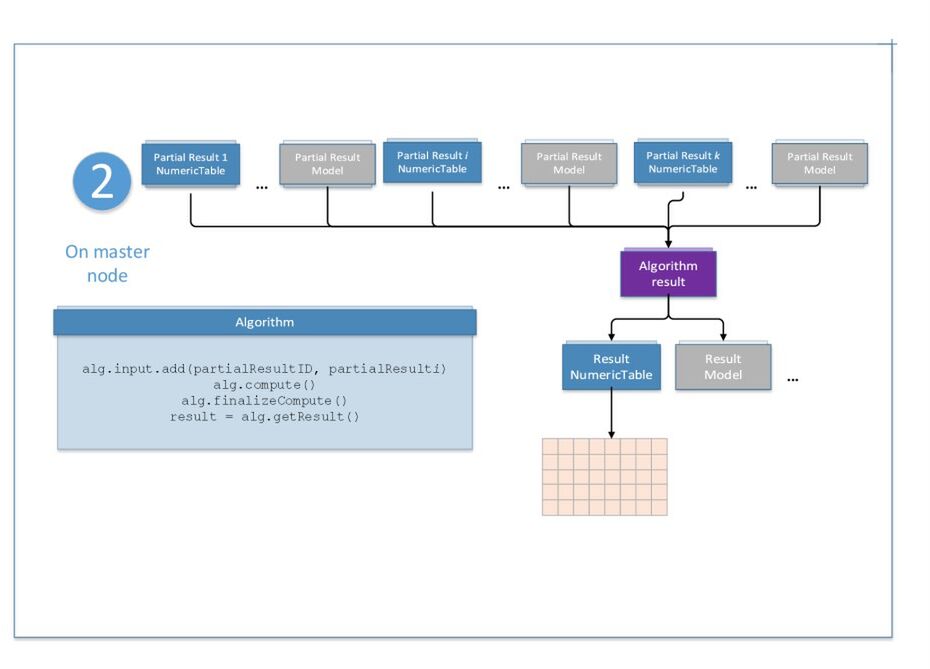GPU621/Intel DAAL
Intel DAAL
Intel Data Analytics Acceleration Library is essentially a library which is optimized to work with large data sources and analytics. It covers the comprehensive range of tasks that arise when working with large data, from preprocessing, transformation, analysis, modeling, validation and decision making. This makes it quite flexible as it can be used in many end-to-end analytics frameworks.
Having a complete framework is a very powerful perk to have as we can be assured that all parts of the system will link together.
The framework is composed of 3 major components: data management + algorithms + services
The data management part of the system is critical to the overall structure, since data must be formatted in such a way that the algorithmic functions will be able to operate on them swiftly and efficiently. This section is the part of the system which deals in extracting long csv files and putting the data in models where they can be accessed by the algorithms. Additionally, this part of the system handles the data in such a way that even if parts of data are missing the algorithmic section will still be able to understand. The following image is an example of how data management structures data, by putting it within a "data set". In the data set, table rows represent observations and columns represent features.
The algorithmic portion of the library supports three different methods of computing. These are in turn batch processing, online processing and distributed processing, which will be discussed later. To optimize performance the intel DAAL library takes and uses algorithms from the Math Kernel Library as well as the Intel Integrated Performance Primitives.
The services section round out the entire system, providing functions to the others such as memory allocation and error handling.
Example service functions include functions to safely read files:
size_t readTextFile(const std::string& datasetFileName, daal::byte** data) {
std::ifstream file(datasetFileName.c_str(), std::ios::binary | std::ios::ate);
if (!file.is_open())
{fileOpenError(datasetFileName.c_str());}
std::streampos end = file.tellg();
file.seekg(0, std::ios::beg);
size_t fileSize = static_cast<size_t>(end);
(*data) = new daal::byte[fileSize];
checkAllocation(data);
if (!file.read((char*)(*data), fileSize))
{ delete[] data;
fileReadError();
}
return fileSize;
}
How to enable
1) Download Intel oneAPI Base Toolkit
2) Project Properties -> intel libraries for oneAPI -> use oneDAL
Computation modes
Batching:
The majority of the library appears to be simple batch processing. I believe batch processing is the equivalent to serial code, where the algorithm works with the entire block of data at once. However, the library is still quite optimized even in these situations. For example the sort function:
We can see that the DAAL version versus a vector quick sort is much slower with a small data collection but as the data set gets larger and larger it starts to outperform the quick sort more and more.
Online:
For this type of computation DAAL supports online processing. In the online Processing method, chunks of data are fed into the algorithm sequentially. Not all of the data is accessed at once. This is of course very beneficial when working with large sets of data. As you can see in the example code, the number of rows in the block of code being extracted is defined. This is missing in the previous sort processing we just looked at which just took all of the data.
Distributed:
The final method of processing in the library is distributed processing. This is exactly what it sounds like, the library now forks different chunks of data to different compute nodes before finally rejoining all the data in one place. The example used here is K-means clustering, which is basically just modelling vectors and seeing where they end up clustering around.
